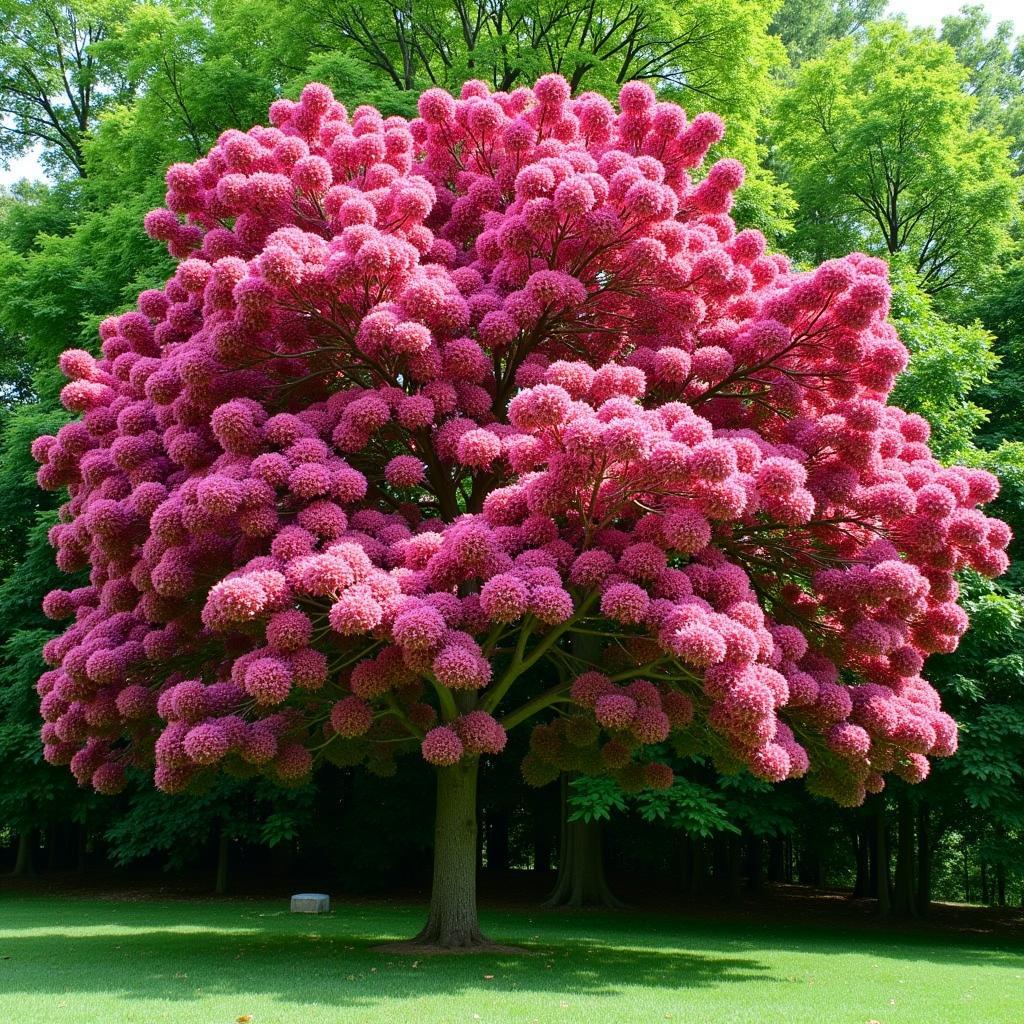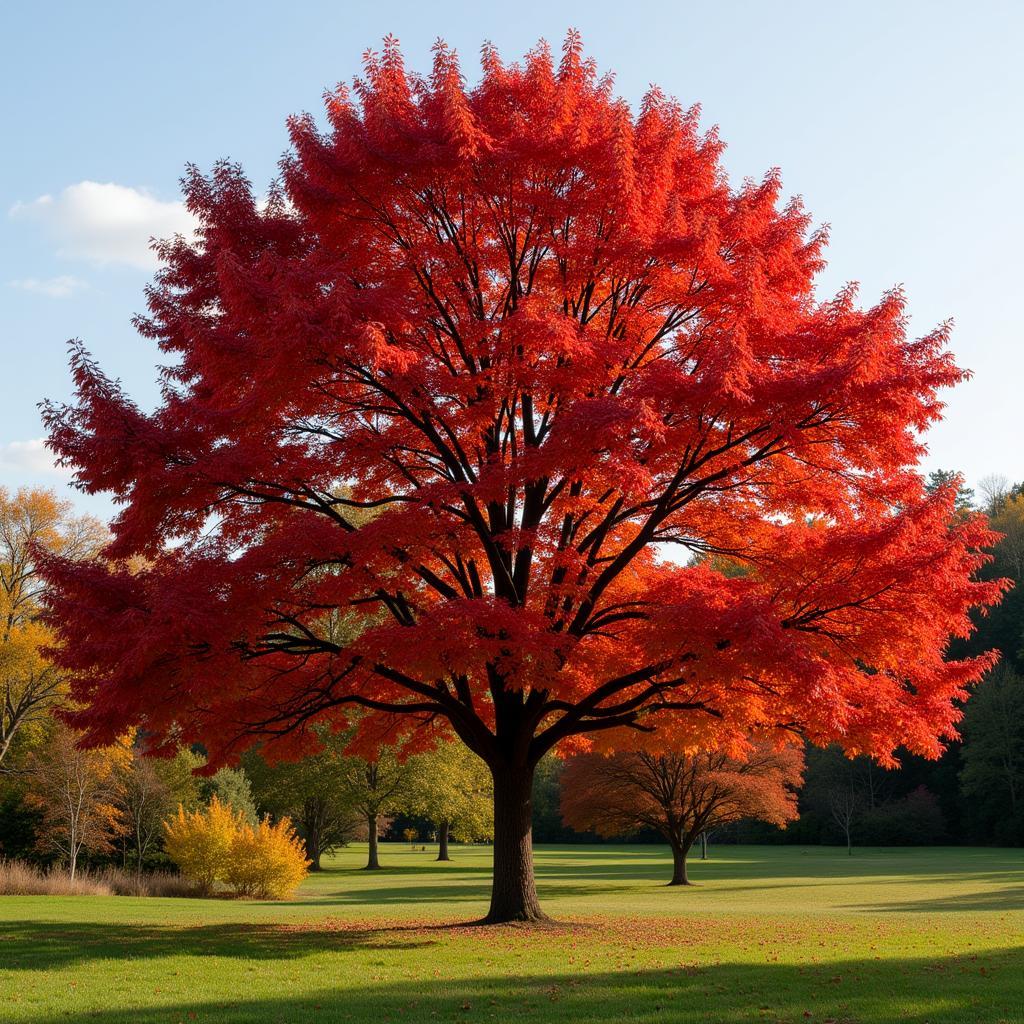The Ruby Red Horse Chestnut (Aesculus × carnea ‘Briotii’), with its vibrant blossoms, is a popular ornamental tree. But beyond its aesthetic appeal, there’s a wealth of knowledge surrounding its care, propagation, and unique characteristics. This article delves deep into the world of the ruby red horse chestnut, providing valuable insights for both seasoned arborists and curious homeowners.
Decoding the Ruby Red Horse Chestnut: A Comprehensive Guide
The ruby red horse chestnut is a hybrid, a cross between the common horse chestnut (Aesculus hippocastanum) and the red buckeye (Aesculus pavia). This heritage bestows upon it desirable traits like striking deep pink to red flowers and improved resistance to leaf blotch, a common ailment affecting horse chestnuts. The ‘Briotii’ cultivar is particularly prized for its exceptionally vibrant, long-lasting blooms. Its moderate size makes it well-suited for various landscapes, even smaller gardens. Now, let’s delve into the specifics of cultivating and appreciating these magnificent trees.
 Ruby Red Horse Chestnut Tree in Full Bloom
Ruby Red Horse Chestnut Tree in Full Bloom
Planting and Care for Your Ruby Red Horse Chestnut
Planting a ruby red horse chestnut requires thoughtful consideration of its needs. These trees thrive in full sun to partial shade and prefer well-drained, fertile soil. Amend heavy clay soils with organic matter to improve drainage. Water regularly, especially during the first few years after planting, to establish a strong root system. Mature trees are relatively drought-tolerant.
Pruning Practices for Optimal Growth
Pruning is crucial for maintaining the tree’s shape and health. Prune in late winter or early spring while the tree is dormant. Remove any dead, damaged, or crossing branches. You can also lightly shape the crown to promote a balanced structure. However, avoid heavy pruning, as it can reduce flowering.
Common Pests and Diseases
While the ruby red horse chestnut exhibits better disease resistance than the common horse chestnut, it’s still susceptible to certain pests and diseases. Keep an eye out for leaf miners, scale insects, and powdery mildew. Regular inspection and prompt treatment can prevent these issues from becoming major problems.
 Close-up of Ruby Red Horse Chestnut Flowers
Close-up of Ruby Red Horse Chestnut Flowers
Propagating Ruby Red Horse Chestnuts
Propagating ruby red horse chestnuts is primarily done through grafting. This technique involves joining a scion (a cutting from a desired cultivar) onto a rootstock (a seedling of a related species). Grafting ensures the new tree retains the characteristics of the ‘Briotii’ cultivar, including its vibrant flower color. While seed propagation is possible, it doesn’t guarantee the offspring will have the same flower color or disease resistance as the parent tree.
Why Choose a Ruby Red Horse Chestnut?
The ruby red horse chestnut is a beautiful and relatively low-maintenance addition to any landscape. Its vibrant flowers, attractive foliage, and moderate size make it a versatile choice for a variety of settings. Its improved disease resistance compared to the common horse chestnut further adds to its appeal.
 Ruby Red Horse Chestnut in Autumn Landscape
Ruby Red Horse Chestnut in Autumn Landscape
Conclusion: Adding a Splash of Ruby Red to Your Landscape
The ruby red horse chestnut offers a unique blend of beauty and resilience. Its stunning flowers make a bold statement in any garden, while its manageable size and improved disease resistance make it a practical choice for homeowners. By understanding its specific needs and following the care guidelines outlined in this article, you can enjoy the vibrant beauty of a ruby red horse chestnut for years to come. Consider this stunning tree to add a touch of elegance and vibrancy to your outdoor space.
FAQ
- How tall does a ruby red horse chestnut grow? They typically reach a height of 40-60 feet.
- When do ruby red horse chestnuts bloom? They typically bloom in May or June.
- Are ruby red horse chestnuts messy trees? They can be somewhat messy due to falling flowers, leaves, and conkers (fruit).
- Are ruby red horse chestnuts poisonous? Yes, the conkers are toxic to humans and some animals if ingested.
- Can I grow a ruby red horse chestnut in a container? It’s best to plant them in the ground for optimal growth.
- How do I treat leaf miner on my ruby red horse chestnut? Consult with a local arborist for appropriate treatment options.
- What other trees are similar to the ruby red horse chestnut? The red buckeye and the Ohio buckeye are similar in appearance.
Need help with choosing the perfect horse for you? Check out young female horse names. For more tree options you can read up on different trees.
When you need assistance, please contact us at Phone: 0772127271, Email: [email protected] or visit us at QGM2+WX2, Vị Trung, Vị Thuỷ, Hậu Giang, Việt Nam. Our customer care team is available 24/7.